Pro-Russian outlets promote misleading story about US Army howitzers moving through Poland
Belarusian Telegram channel pushed inaccurate claim, leading to anti-Western coverage by Russian and Belarusian outlets.
Pro-Russian outlets promote misleading story about US Army howitzers moving through Poland
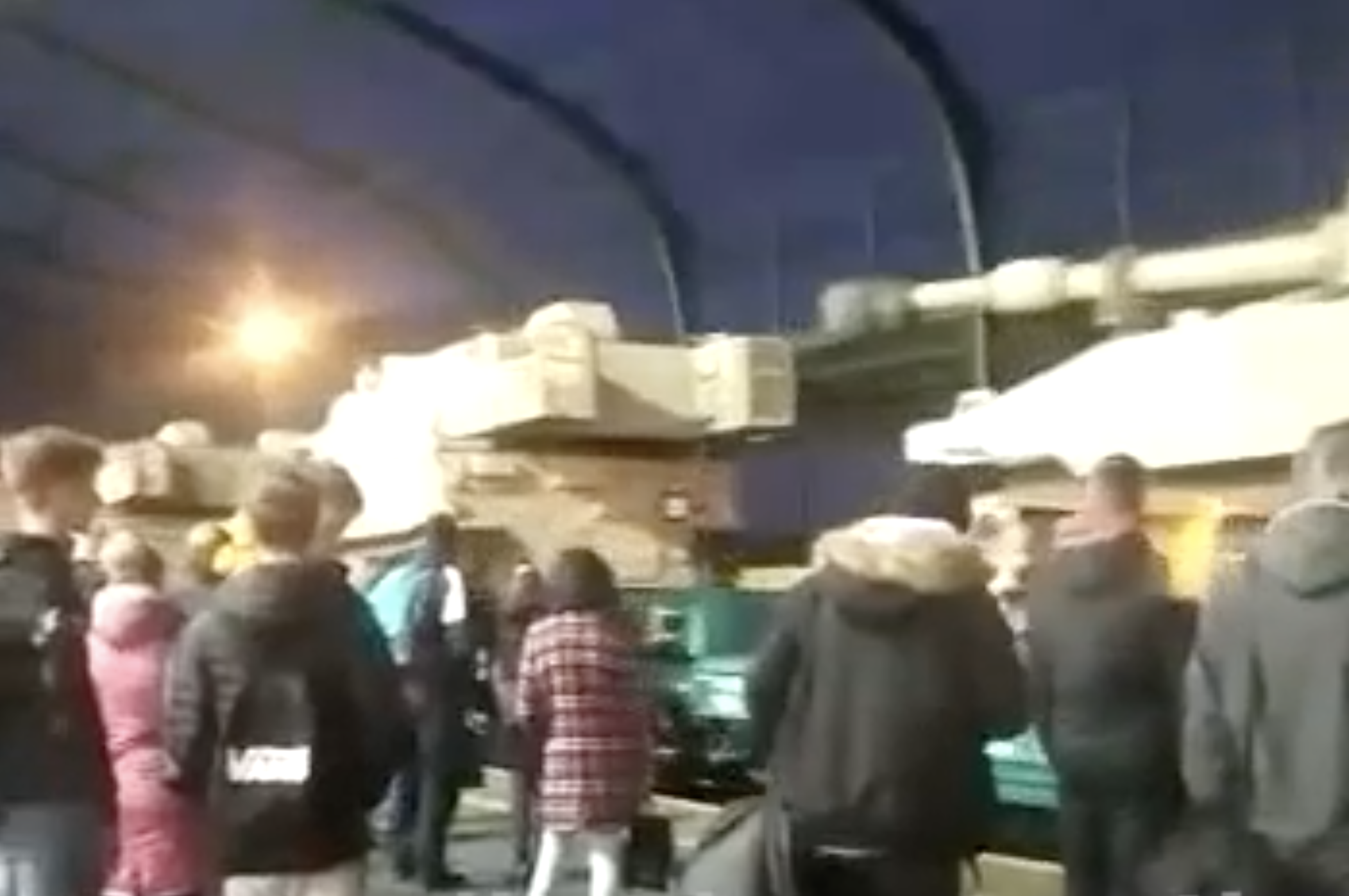
BANNER: Screenshot from a Telegram video showing US M109 Paladin artillery systems on a westward train passing through a train station platform in Legnica, Poland. Text that accompanied the video inaccurately claimed the train was heading east. (Source: BelVestnik/archive)
A Belarusian pro-government Telegram channel published a misleading video allegedly showing a train loaded with US M109 Paladin artillery systems moving toward Poland’s border with Belarus. Multiple Russian and Belarusian pro-government outlets published articles based on the video and this assessment. After the Polish fact-checking outlet Konkret24 disputed the assessment, a subsequent DFRLab investigation confirmed that the video was recorded in Poland but that the train was headed west toward Germany rather than east toward Belarus.
In a period of escalating tension, Belarus has sought to tie itself more tightly with Russia, heightening its anti-Western geopolitical messaging and destabilization efforts as Russia significantly increases its military presence near the Ukrainian border. On November 29, 2021, Belarus announced a planned joint military exercise with Russia near its border with Ukraine while criticizing NATO for building up offensive capabilities near its borders.
In view of this, the amplification of a misleading narrative around a video of US military deployment in the region may serve the purpose of shaping the perception of domestic Belarusian and Russian audiences that Western countries are hostile toward Belarus and, in doing so, may also galvanize public support for the upcoming joint exercise. This instance represents yet another example of narrative warfare intending to portray the United States and its NATO partners as warmongers, as a means of justifying Russian and Belarusian military posturing.
A misleading claim built around a video
On November 23, 2021, Belarusian pro-government Telegram channel BelVestnik published a video from the previous day showing a train with US military equipment — specifically M109 Paladin artillery systems mounted with M284 howitzers — passing through the train station in Legnica, Poland. The video was accompanied by text in Russian claiming that the equipment “arrived from Germany and was moving east,” implying it was heading in the direction of Poland’s border with Belarus
Following the release of the video, Polish fact-checking outlet Konkret24 reported that the video was indeed taken in the Legnica train station, but that BelVestnik’s post had misidentified the train’s direction, as multiple details within the video indicated the train was actually moving west, not east. Legnica is approximately 100 kilometers from the German border, and 600 kilometers from the Belarusian border. In heading west, the train would be heading towards Germany, not Belarus. Analysis by the DFRLab verifies Konkret24’s findings.
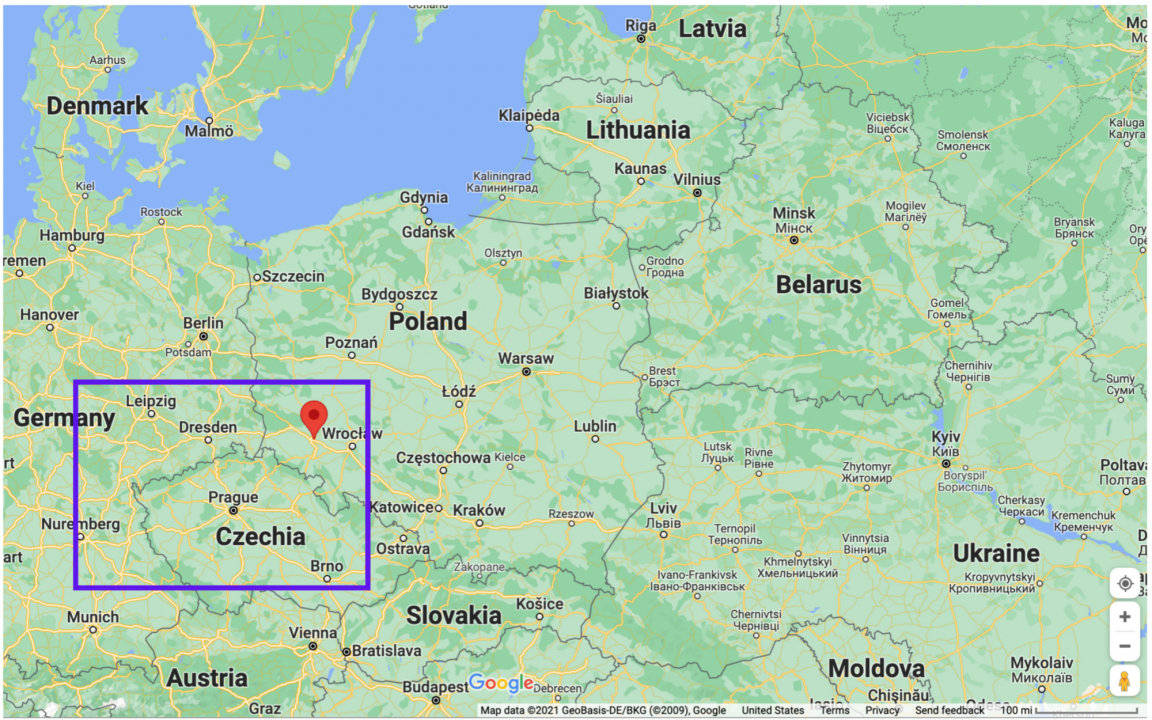
While there is potential that the train could have been heading west at the time the video was captured prior to heading east, the public affairs department of the US Army Europe and Africa announced on November 25, 2021, that the Paladins belong to its 1st Armored Brigade Combat Team, 1st Infantry Division, which is stationed in Żagań. They also clarified that military vehicles were heading to the Hohenfels military training ground in Germany for the Combined Resolve military exercise. The DFRLab found no evidence to refute the US Army’s claim.
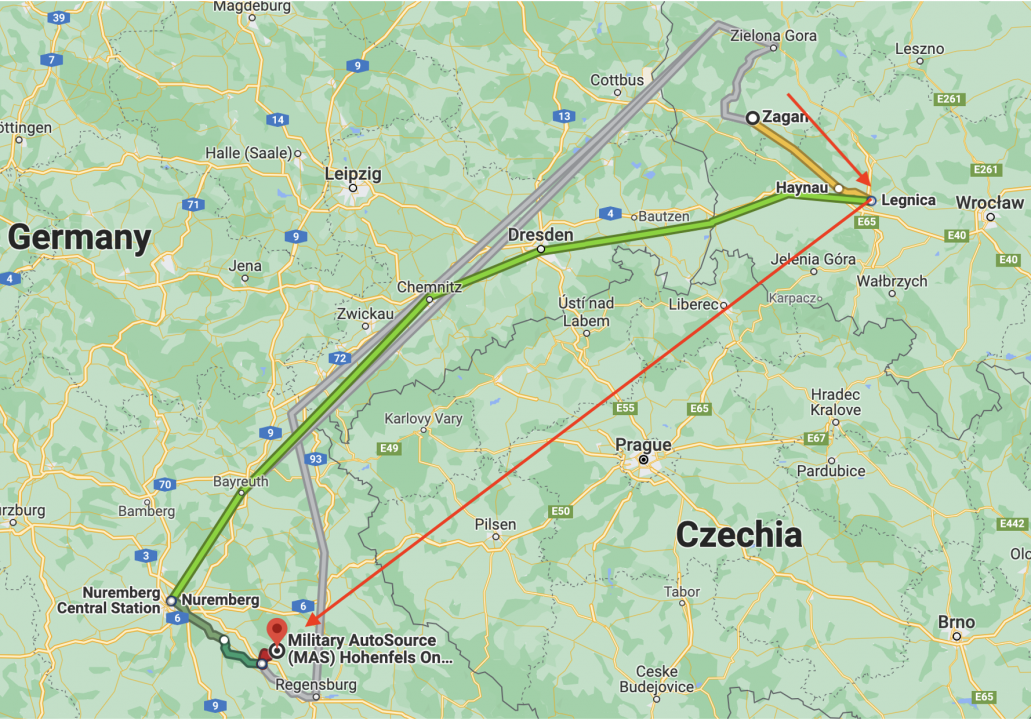
The US Army’s 3rd Armored Brigade Combat Team of the 4th Infantry Division (3/4 ABCT) has been stationed in Poland since 2017. This includes over 4,000 troops and 2,000 vehicles, along with tanks and self-propelled howitzers. The brigade headquarters is located in the Polish city of Żagań, located 82 kilometers northwest of Legnica. US troops frequently conduct multiple training and exercises in different locations throughout Poland, often requiring transit within Poland as well as nearby countries.
West, not east
To assess BelVestnik’s claims and Konkret24’s subsequent investigation, the DFRLab identified where the video was recorded and geolocated it in relation to available satellite imagery.
In the video, there is a yellow building with a distinctively shaped wall visible in the background that appears to be the main building for the Legnica train station, located to the south of the railway tracks and opposite a larger platform building. The capture of the main building in the video and the orientation of movement of the train in relation to this building indicated that the train was heading west, not east, and that the videographer was facing south while recording the footage.
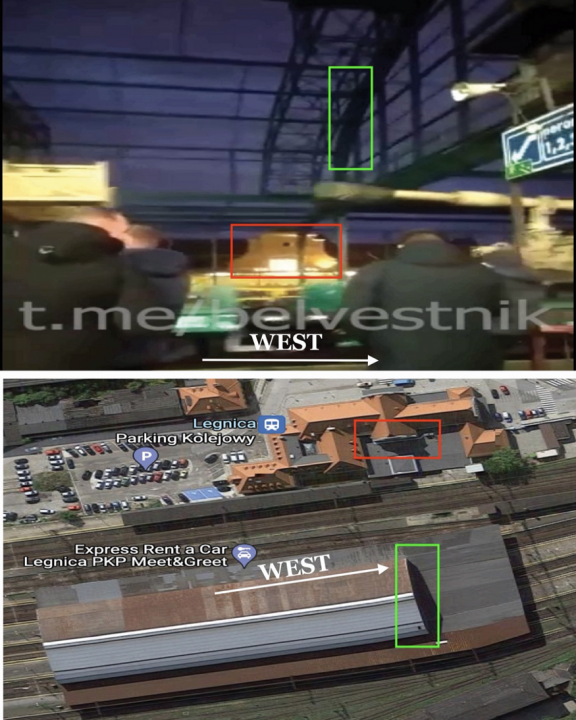
Additionally, Google Maps showed no buildings to the north from Legnica railway warehouse, and no similarly shaped building would be visible in the background if the train was moving from west to east through the platform building.

The DFRLab also reviewed a YouTube video that thoroughly details the Legnica train station, including a shot taken from a train passing through the platform building in which the main station building can be seen facing southward, matching same general direction as BelVestnik’s video.
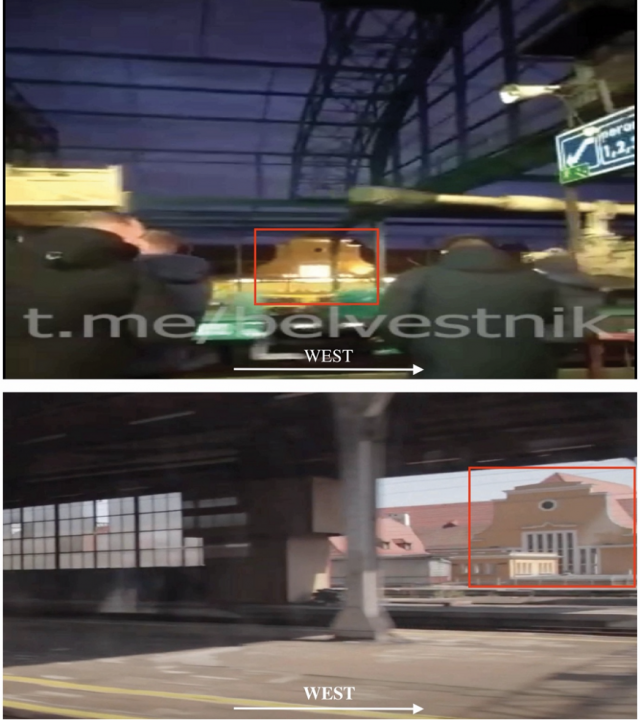
The façade of the main building of the Legnica train station has a distinct design, visible in the two videos as well as in a photo of the Legnica train station available on Wikimedia Commons.
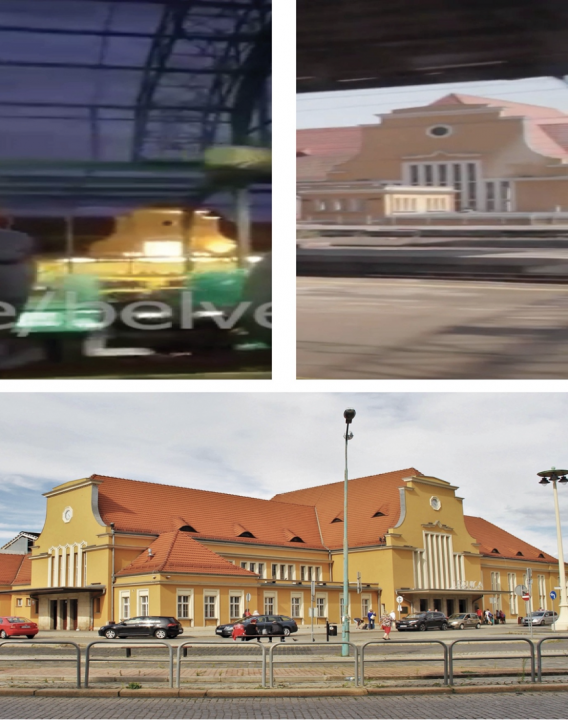
As evident from signage captured in the video, BelVestnik’s video appears to have been taken from Platform 4 in the platform building, as a sign seen overhead appears to indicate that access to Platforms 1–3 are accessible by descending a staircase and heading left, while Platform 5 is accessible by descending the staircase and heading right. The lack of a “Platform 4” on the sign despite access to platforms numbered above and below the number four would suggest the sign being located on Platform 4 itself.
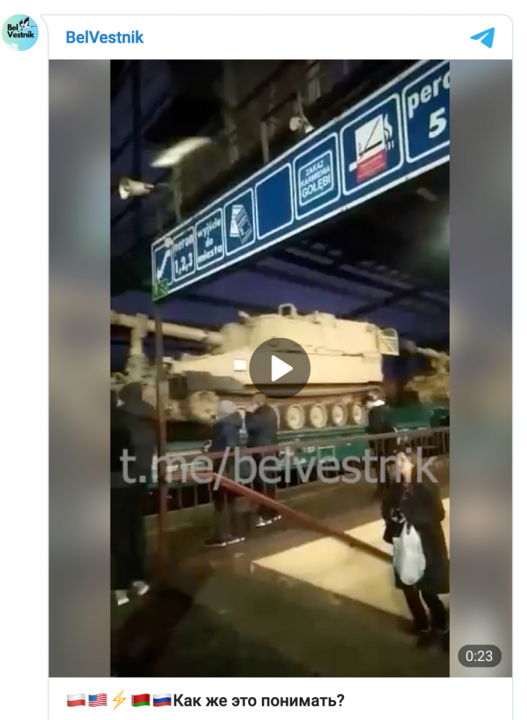
The DFRLab used Google Image Search for other pictures of Platform 4 and found another photo on Legnica Naszemiasto website appearing to show the same location where the BelVestnik video was shot. Between the BelVestnik video and the still photo, two other nearby objects — a blue tower and a building with yellow roof — provide further confidence as to the orientation of the original video as facing southward. Identifying these two objects on Google Maps showed that both are located west of the platform building, the direction the train is moving.
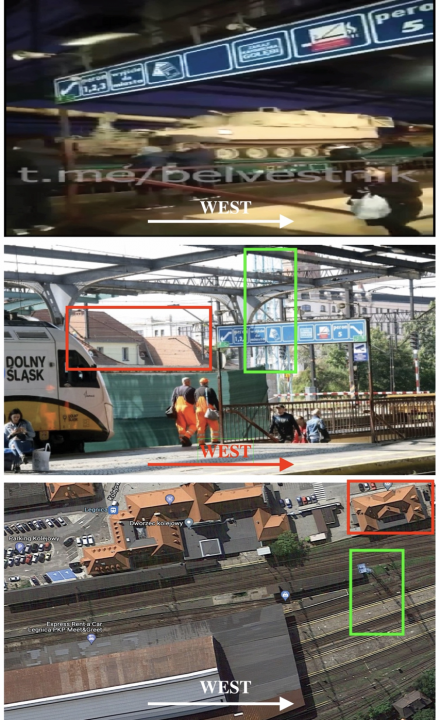
The DFRLab also reviewed the type of weaponry visible in the BelVestnik video, confirming that they are indeed M109 Paladin artillery systems.
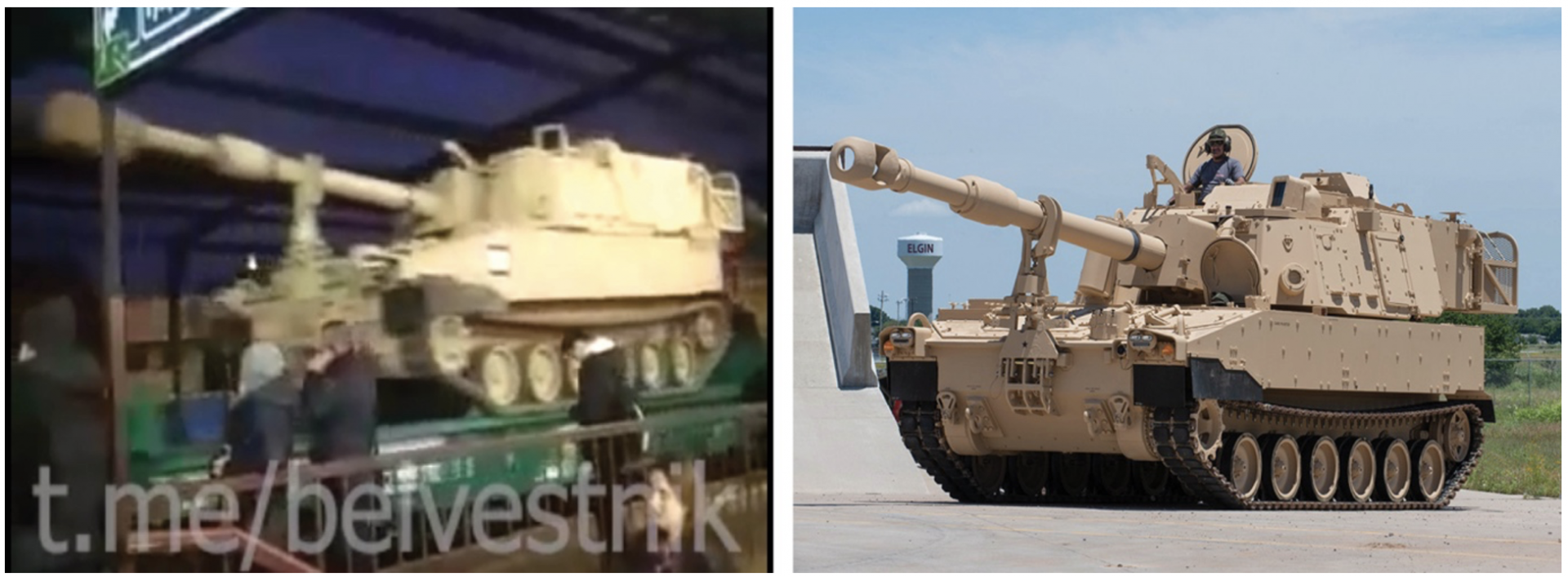
Russian and Belarusian outlets amplify the Belvestnik video
Following the appearance of BelVestnik’s Telegram post, Kremlin-funded website Avia.pro published an article claiming that the United States was deploying at least 30 M109 A7 Paladin artillery systems bearing self-propelled howitzers to the Belarusian border. The post was also amplified by Russian and Belarusian outlets, including state-controlled Belarusian news agency BelTA, which suggested that the military hardware could be used to fire into Belarusian territory.
They wrote that NATO had started a military build-up near border with Belarus and Russia and their effort aimed at contain Russia. Narratives that appeared in Russian and Belarusian pro-government media were quite similar with each other.

A query using the social media monitoring tool Meltwater revealed that the keyword “США” (“USA”) appeared alongside “Паладин” (“Paladin”) in Russian or English in 77 articles from November 24 to December 1, 2021. Moreover, 66 mentions came from Russia, and five came from Belarus. While it seems that stories about the movement of the Paladin artillery systems did not gain a significant traction on Twitter (with a peak of between 200 and 250 mentions on November 24), Polish outlet Onet reported that tweets about them appeared in Spanish, French, and Italian. The DFRLab also checked social media engagement on Russian language stories about Paladins, but they did not gain a significant traction on other platforms.
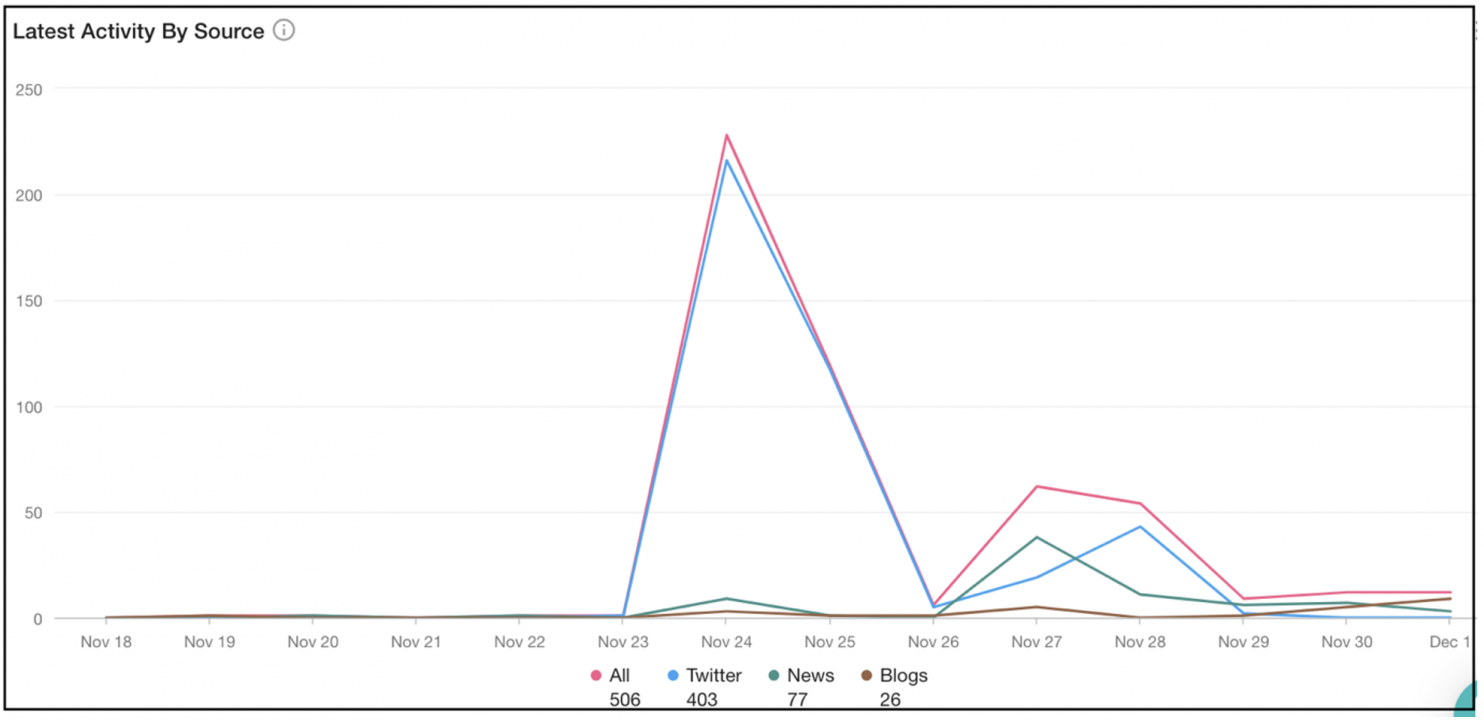
Cite this case study:
Givi Gigitashvili, “Pro-Russian outlets promote misleading story about US Army howitzers moving through Poland,” Digital Forensic Research Lab (DFRLab), December 21, 2021, https://medium.com/dfrlab/pro-russian-outlets-promote-misleading-story-about-us-army-howitzers-moving-through-poland-7241805a948.

